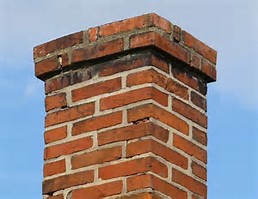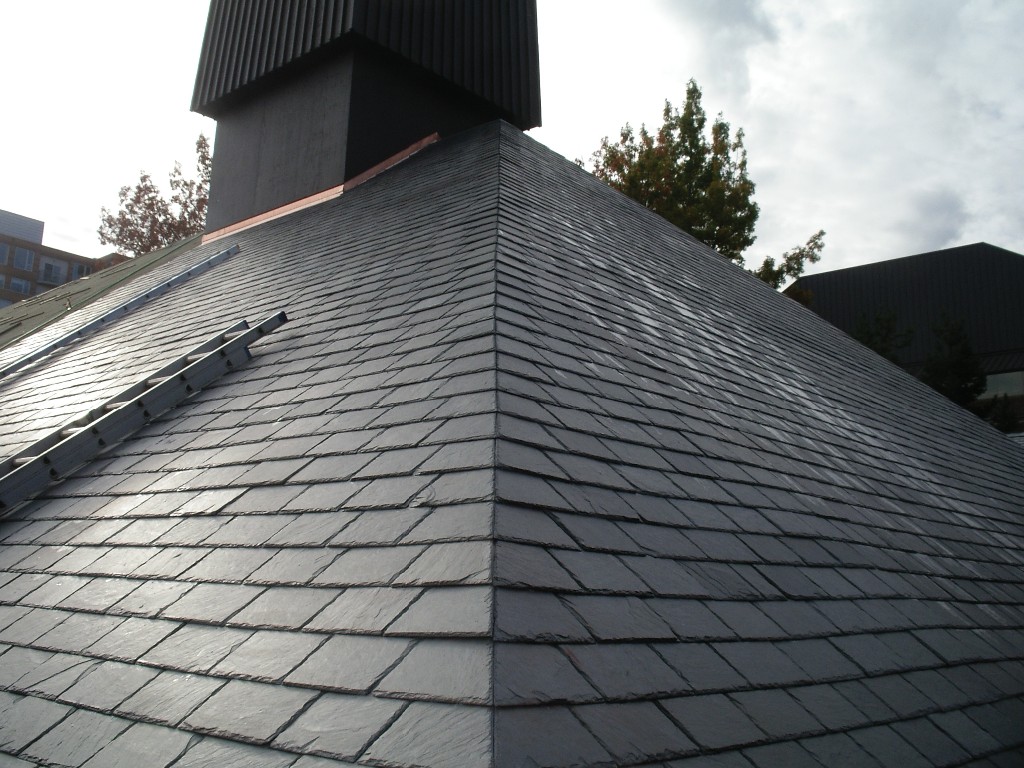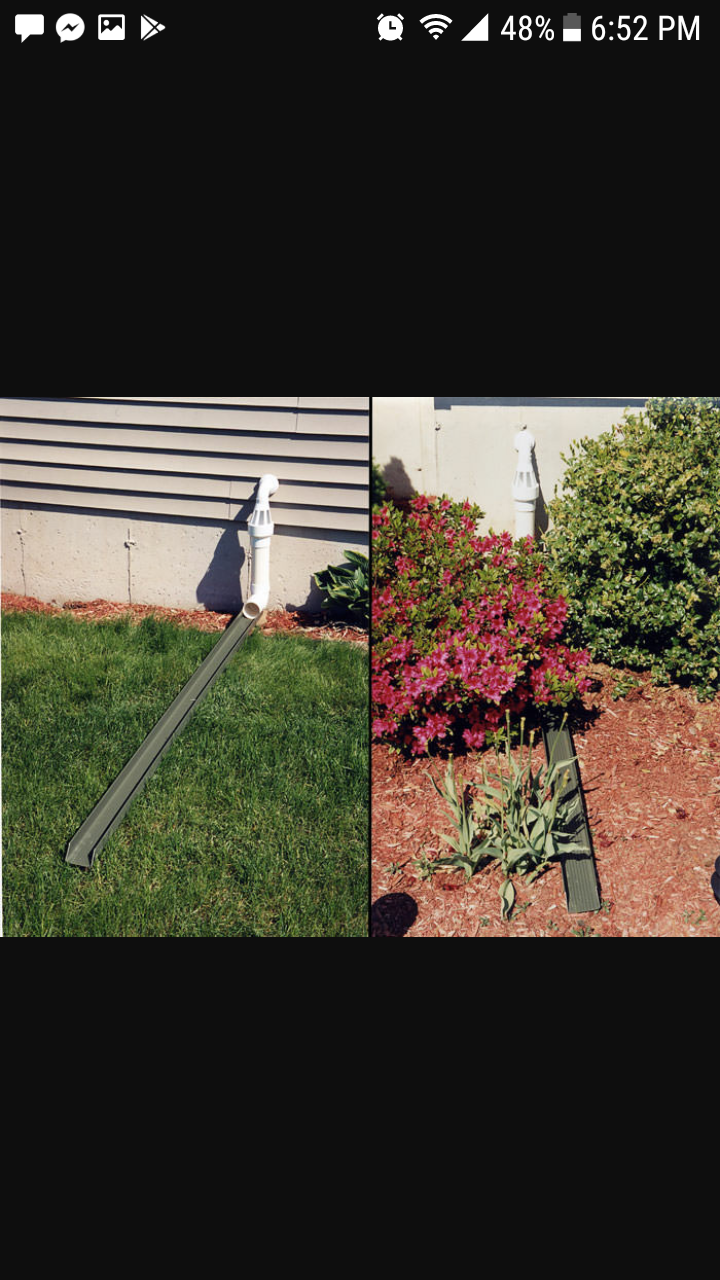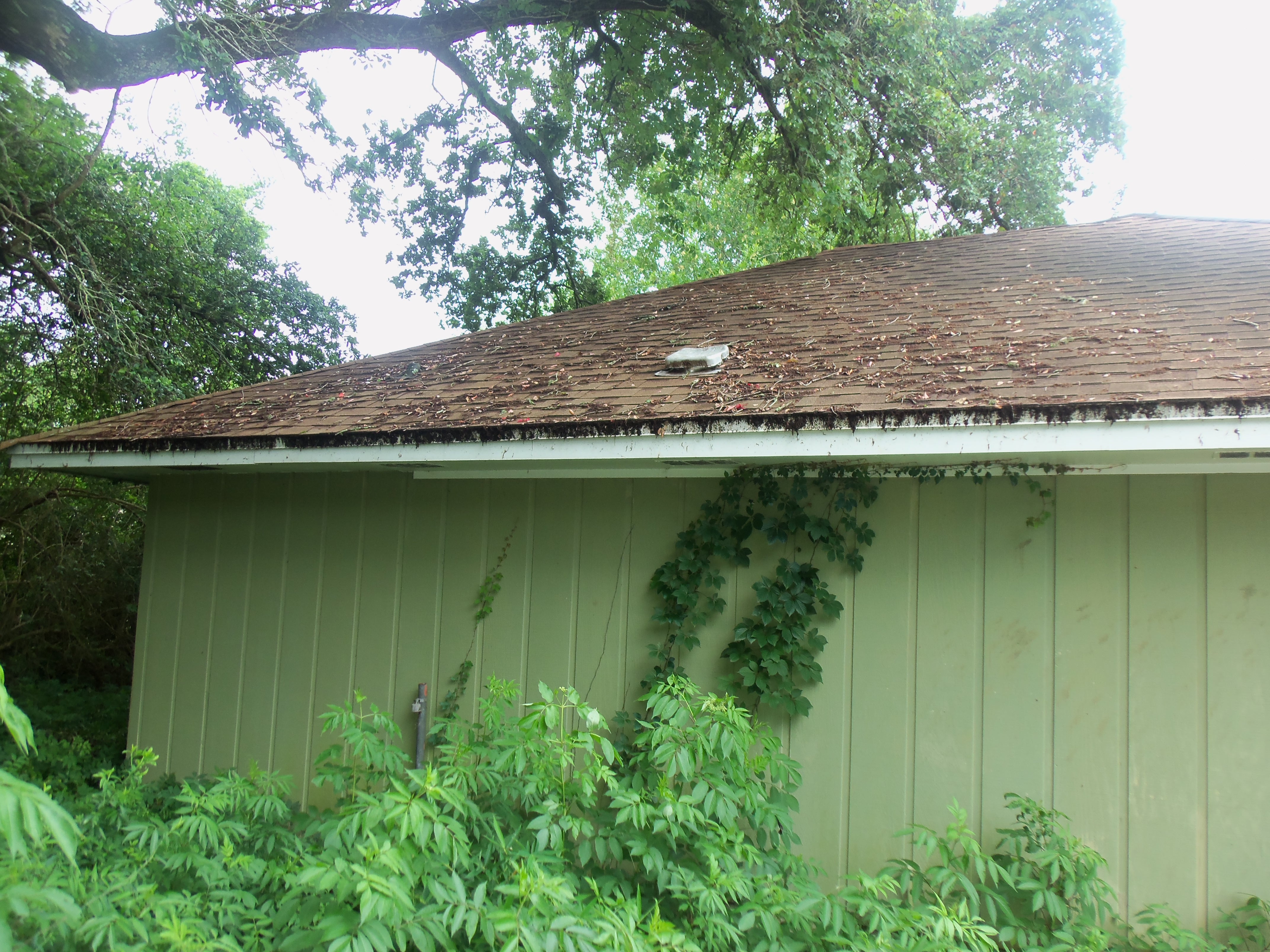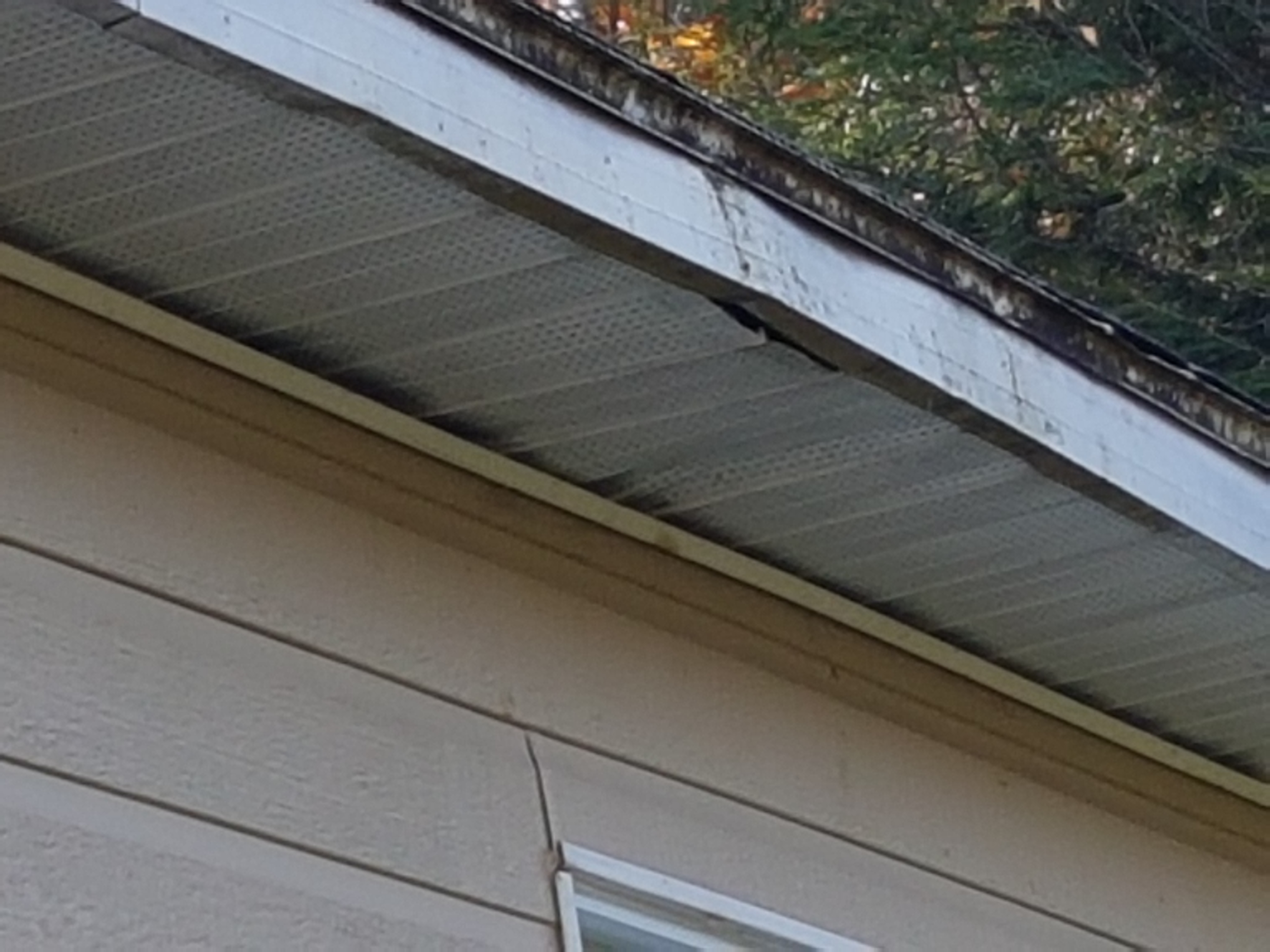A slate roof is considerred a permanate roof, which could last as long as 80 years. The inspector should never walk on a slate roof. The shingles are brittle and repair is very typically expensive. The inspector should take close up photgraphs to show the defects, if any.
Chimney height: My obervation of this detail taught me that perhaps the cricket found at the base of the chimney should be ridged perfectly level, to prevent a water pocket at the roof intersection and water run-off towards the chimney.
In the picture you can see the downspout kinda terminated closr to the house. Thats could have caused major issues because water was not being diverted away from the hpuse far enough. SO extension was added to carry the water away
Flashing. I learn that improper flashing and be one of the biggest problems for a fooring systwm. It can lead to water intrusions and cause varies issues throughout tge home such as energy lose rotten wood etc. It can also lead to structure issues
In performing the roof inspection, it is noted there is leaves and limb debris covering the architectural shingles on the right rear roof due to the overhanging oak limbs. It is also noted that the debris from the oak limbs have lodged between the shingle overlap and the drip edge molding causing continual dampness along the side edge. It is recommended to cut or trim any limbs that overhang the roof.
This picture shows a roof vent with the collar in the wrong position. The collar should be lower, close to the thimble, and sealed properly. This is a potential water entry point. Correction and further evaluation is recommended. Inspector should watch for water damage inside.
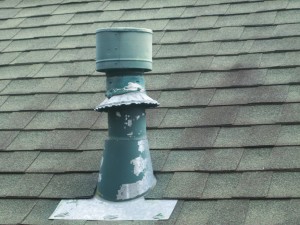
Between 1965 and 1973, single strand aluminum wiring was often substituted for copper branch circuit wiring in residential electrical systems due to the escalating price of copper at the time. After a decade of usage, inherent weaknesses were found in the metal that eventually lead to it being disused as a branch wiring material. It was discovered that aluminum became defective a lot faster that copper wiring.
The image titled “Fasteners per Shingle” shows the appropriate number of fasteners per strip shingle is 4, except in high wind areas where the number is 6. The image also shows the placement of the fasteners. They should be below the adhesive strip, and above the exposed are of the shingle
Ventillation de toit
Cette proprit a un systeme adequat de ventillation parcontre il est en mauvais tat. Elle possde des soffits afin de laisser entrer l’air et un vent de toit afin de laisser sortir l’air et l’humidit. Cependant a plusieurs endroit le soffit est dplac ce qui laisse donc les insecte et les animaux pntrer au grenier.
Colonne en acier ajustable
Ces poteaux son conu pour apporter un support structurel. Il s’ajuste grce un mecanisme de vis fileter. Ceux d’un diamtre de moin de 3 pouce sont considr dfectueux selon le CRI de 2006. Il ce doivent d’tre protg avec une peinture anti-rouille. Le dcalage maximale permis entre le haut et le bas doit tre de 1 pouce. Les poteaux doivent tre fixs mcaniquement au sol et la poutre. Un exposition maximal de 3 pouces des filets maximun est acceptable.
In the picture shown, there are at least two problems observed. The first issue is that the engineered roof truss has been altered to use homemade plywood gussets to connect the members of the engineered truss. There is no way to know without corresponding with a structural engineer whether the plywood and nails gusset meets the strength and structural requirements of the engineered truss design for this building. Never modify a roof truss without prior consultation with a structural engineer.
In addition, you’ll notice the signs of water and mold on the plywood gusset. This indicates water intrusion in the roof that needs to be located. Also, decay can reduce up to 50% of the strength of the gusset initially, and eventually can lead to complete failure of the gusset
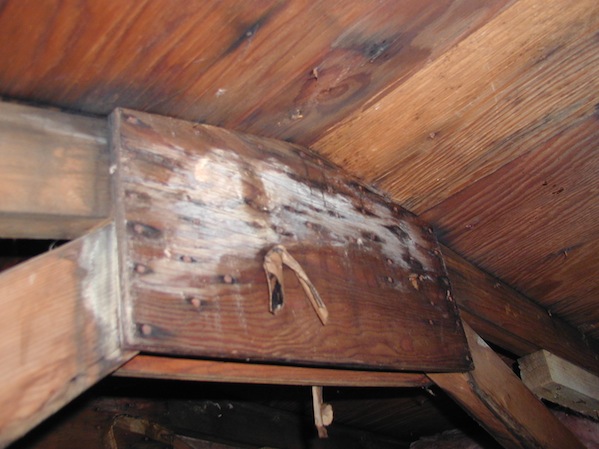
Purlin Bracing
Pulin bracing is a bracing process used in roof framing construction. It is used to reduce the span of long rafter runs, helping to prevent rafter sagging. You’ll use a ‘strongback’ beam to connect the purlin bracing to the rafters. Attach the strongback at the midway point of the rafter span for the complete run of the rafters. The strongback should be crafted from 2"x4"'s, either double plated, or singles, and attached to the rafters on their head side. The purlin bracing should be angled no more than 45 degrees and the bottom end needs to rest and attach to a bearing wall, never a ceiling joist, with the top end connecting to the strongback. These should be repeated on every other rafter.
Discharges to foundation- QC
One or more downspouts discharged roof drainage next to the foundation. The home had downspouts extensions missing at the time of the inspection. This condition can result in excessively high moisture levels in soil at the foundation and can cause damage related to soil/foundation movement. Excessive moisture levels in soil near the foundation can effect the ability of the soil to support the weight of the structure above and can cause damage related to soil/foundation movement. The Inspector recommends the installation of downspout extensions to discharge roof drainage a minimum of 6 feet from the foundation.

Builders may not have know the need for kick out flashing at the time the home was built as it need is relatively new. Due to increasing amounts of insulation and building wraps that are used in modern construction, buildings are less breathable and more likely to sustain water damage. properly installed kick out flashing will prevent water from entering the wall structure and being absorbed, causing damage, and encouraging microbial growth.
While inspecting the roof, the chimney was observed to have a damaged chimney cap. It has rusted through and will allow water to collect inside and will likely lead to water intrusion. Recommend further evaluation and repair by a licensed roofer.
Logging in
Chimney flashing is one of several critical components necessary to prevent water intrusion. Since the chimney is the largest projection through the roof, it is an important place for inspectors to check closely for flashing issues. Cricket, step, apron, backer, and counter flashings can all be found at chimneys.
Patched areas and granule loss are typical findings on aged 3-tab shingle roofs. These issues can be found where there is two layers of shingles as well. A licensed qualified roofer should evaluate and recommend stripping the existing layers, repair any sheathing and properly install new roofing products.
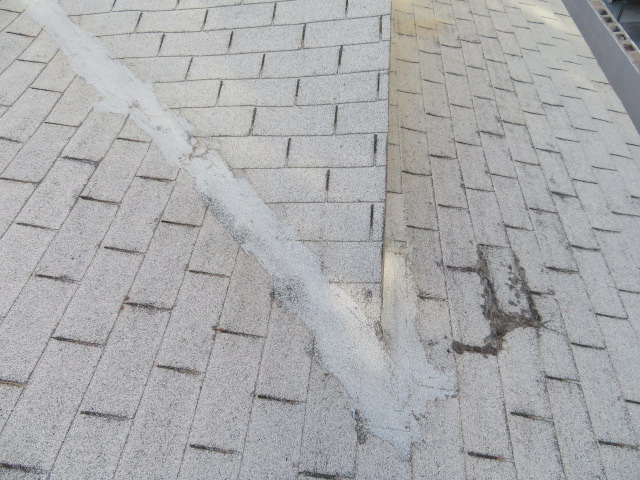
Felt installation is an important part of any roof system. Felt underlayment should overlap the edge metal at the eaves and be overlapped by edge metal on the rakes. This is also the case for rubberized asphalt underlayment, but not necessarily for synthetics.
This brick chimney shows to be in poor condition. Spalling of the mortar is noted and the bricks are shifting suggesting moisture intrusion. It also lacks a rain and chimney cap which can lead to failed components and infestations from animals. Evaluation by a chimney specialist advised.
